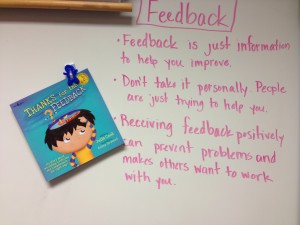With Valentine’s Day upon us, I can’t help but think that maybe, just maybe, a teacher had a primary role in the popularizing of Valentines. I figure a teacher must have had a hand in it because not only is teaching a labor of love, but because celebrating Valentine’s Day in cheerful atmosphere of an elementary school is pretty incredible. To be honest, my husband and I don’t do a lot beyond take-out and a movie night, because little can top the experience I have celebrating with my students. Traditionally a nonuniform day, students flood the halls in bright pinks, purples, and reds, toting bags, sometimes larger than themselves, of cards and special treats for one another. Joy, love, and energy: the day is magical.
Also, this is a day when teachers celebrate the love they have for each of their students. Each August we are given a new crop of kids. Some bound through that door on the first day easy to love. Excited and capable learners, eager to please, and adept in getting along and working with many different peers,; these kids effortlessly win over the hearts of their teachers. Others take time to learn to love. Sometimes we have to put effort into learning to love the child who repeatedly needs motivation to get started on anything. Sometimes it is the child who needs direct instruction and repeated help learning to blow his nose. Sometimes it’s the child who gets the academics just fine, but needs lots of coaching on how to talk to friends. Sometimes it is that child who needs extensive coaching on humility, taking chances, and learning that he has made mistakes and that it is okay to make mistakes. Let’s face it, each year we get a new bunch that we are charged to not just teach, but love. And each year, we learn to love each individual.
As teachers it is not about loving our students blindly, nor is it about loving them because we feel sorry for any shortcomings. We love them because we know each child as an individual. We learn about their passions, their strengths, and their challenges. We look at the whole child, we connect, and we love. This love helps drive everything we do as teachers. It is because of this love that we have difficult conversations with parents. Because of this love we spend hours grading with specific and tailored feedback that can help a child level up. Because of this love, we drag ourselves to school with awful colds or little sleep, and muster up the patience and energy to make it through the day. Teaching is truly a labor of love.
So you can imagine how surprised I was to find out that it was NOT in fact a teacher who popularized Valentine’s Day. The “Mother of the Valentine” was Esther Howland, a young businesswoman who began mass production of valentines in the 1840s. So even though we are underpaid, overworked, and didn’t strike it rich by mass producing cards, don’t forget to celebrate why you teach this Valentine’s Day.
Learner, Thinker, Writer: Mary Jacob Harris (@maryjacobr) serves the Trinity School community as a Third Grade Lead Teacher.

